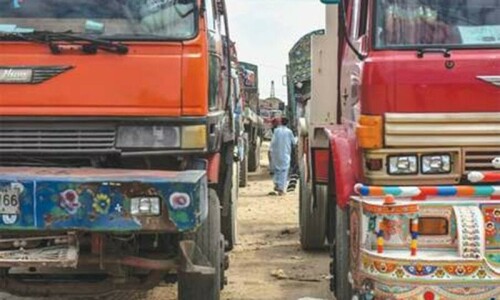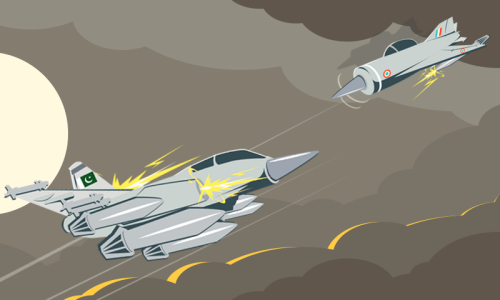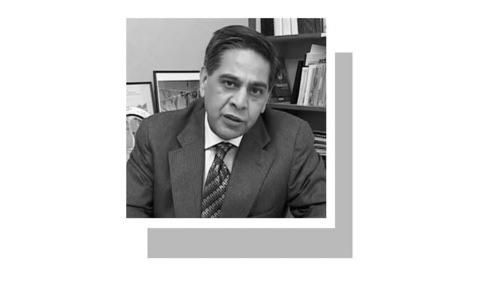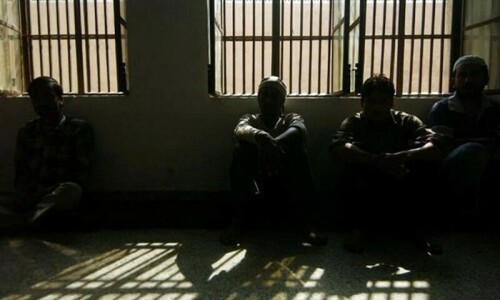There is a non-partisan agreement across the political divide that the change in the voter turnout rate in these highly competitive elections will be the ultimate decider. The disagreement is about what will be decided by the change in the voter turnout rate in the upcoming elections.
For electoral candidates competing in Punjab the quantity and quality of the turnout is going to make the critical difference between a comfortable win for the incumbents and the likelihood of an upset. Voter turnout rate is seen, here, as a barometer of the electoral fortunes of political parties.
The Pakistan Tehreek-i-Insaf rightly identifies the “getting-the-voter-out” strategy as having the potential of being a real game-changer as Pakistan’s current turnout rate is well below the rates found in the region. Pakistan’s national turnout rate was 44.4 per cent in the 2008 elections. This is much lower than the rates found in recent elections in India (58 per cent), Bangladesh (85 per cent), Sri Lanka (61 per cent) and Nepal (63 per cent). They are also right in arguing that the current turnout rate is much lower than the rate achieved in Pakistan’s 1970 election (60 per cent), which provided a radical shock to the status quo. They are aware that the promise of change can only be realised if the high turnout of the 1970s can be emulated.
They attribute Pakistan’s much lower turnout rates to the absence of a credible party of change and governance in the eyes of the voter. Voters, according to them, do not turn out because they believe that existing parties lack credibility and are bereft of ideas that can solve serious governance challenges.
Many sitting incumbents in Punjab, however, view organisational constraints in local party organisations to be the primary cause for low turnout. Mobilising voters is quite costly, requires capital, organisation and an extremely effective campaign infrastructure. Incumbents argue that parties lack this because long periods of military rule have depleted party organisations, which take time to build. Their expectation is that turnouts will rise steadily so long as democracy remains on course as this will allow parties to build organisational capacity and allow voter education to increase. They do not see an explosive increase in turnout happening in the upcoming election and those belonging to the Pakistan Muslim League-Nawaz remain quite optimistic about their prospects.
Which of these views is correct, only time will tell.
Evidence does tell us that a strong correlation exists between the margin of victory (which is a measure of how competitive a seat is) and turnout in Punjab. In 2008, high turnout constituencies also had higher levels of electoral competition in Punjab. This could mean one of two things; either more competitive elections result in a higher turnout or higher turnouts result in greater competition. The incumbents in Punjab should be worried if the former effect holds, given that the upcoming elections are expected to be highly competitive.
There is another view that is taking shape amongst voters outside Punjab. This view emphasises turnout as a barometer of political integration. In this view, roughly equal rates of voter turnout across Pakistan’s provinces, regions and amongst voters of different ideological persuasions is essential for the next election to be truly representative. Without this, the government and parliament may not be able to effectively legislate and govern. In this view, turnout is an important indicator of the strength of democracy, the legitimacy of state institutions, the level of confidence in the government and national integration. If there are specific and significant populations that are staying away from polls, it should be of great concern to all democratic forces in the country.
There are structural reasons why we should take these concerns seriously. Turnout rates in Khyber Pakhtunkhwa and Balochistan are, and have historically been, well below the rates found in Punjab and Sindh.
In fact, there are constituencies in Balochistan and KP where turnout rates, in some elections (including the elections of 2008), have been as low as 20 per cent of the registered vote. These are also the two provinces where the project of national integration has historically faced its greatest challenge. Will Pakistan be able to move ahead politically if two-thirds of the registered voters in these provinces are unable or unwilling to exercise their right to vote?
Concerns about differential voter turnout are also stemming from the intentional acts of violence and terror, which are being perpetrated against certain political parties and to dampen voter turnout in these two provinces and in Karachi. The denial of the right to vote for parts of the population cannot bode well for any democracy. South Asian history is replete with examples where the failure of political integration has resulted in sustained violence, conflict and national breakups.
While elections must not be delayed at any cost; the caretaker governments, institutions of the state and all political parties, regardless of whether they are being targeted or not, should reach a consensus zero-tolerance policy on this issue to ensure that the democratic transition begins to integrate this highly diverse polity. They must ensure that sustained violence do not squander the opportunity provided by the decision of the nationalist parties in Balochistan to participate in the elections.
This is critical given that the voter base has historically been extremely polarised in Balochistan and KP along ideological and party lines. Unlike Punjab and Sindh, where the top three parties control almost 90 per cent of vote polled; the share of votes has historically been extremely fragmented across parties in KP and Balochistan.
Voters in these provinces are divided along a range of ideological party platforms, which range from religious to nationalist (Figure 2). Low turnouts among certain regions and groups of voters in these provinces, and in Karachi, on account of political violence will create immense problems of political integration. It will also make it difficult to establish the needed political consensus to fight the ongoing political violence and insurgency, which has its highest incidence in these two provinces and in Karachi. The next governments and parliaments may also find it extremely difficult to govern these areas, as most have in the past, unless national and the provincial legislators have been, and are seen to have been, elected through the free participation of voters of all hues. n














































